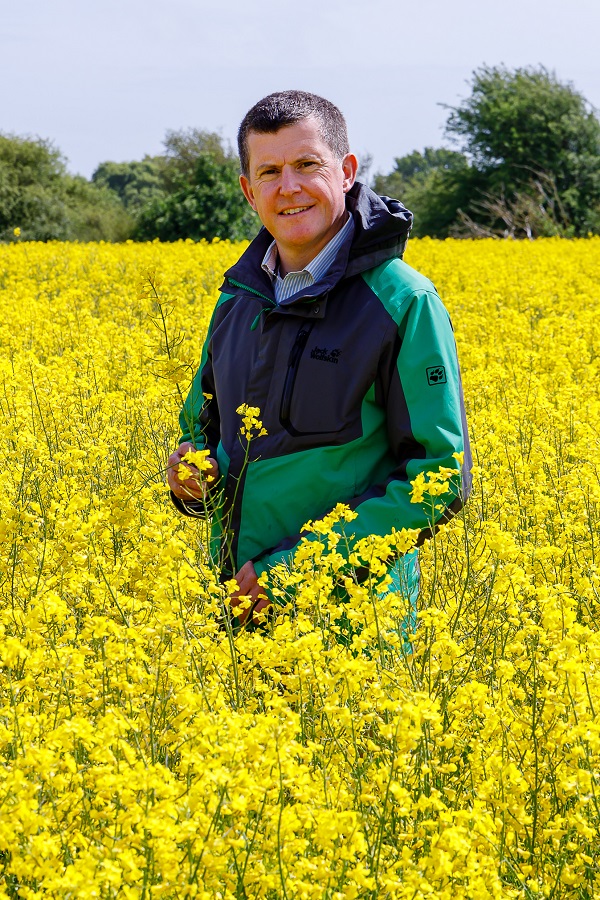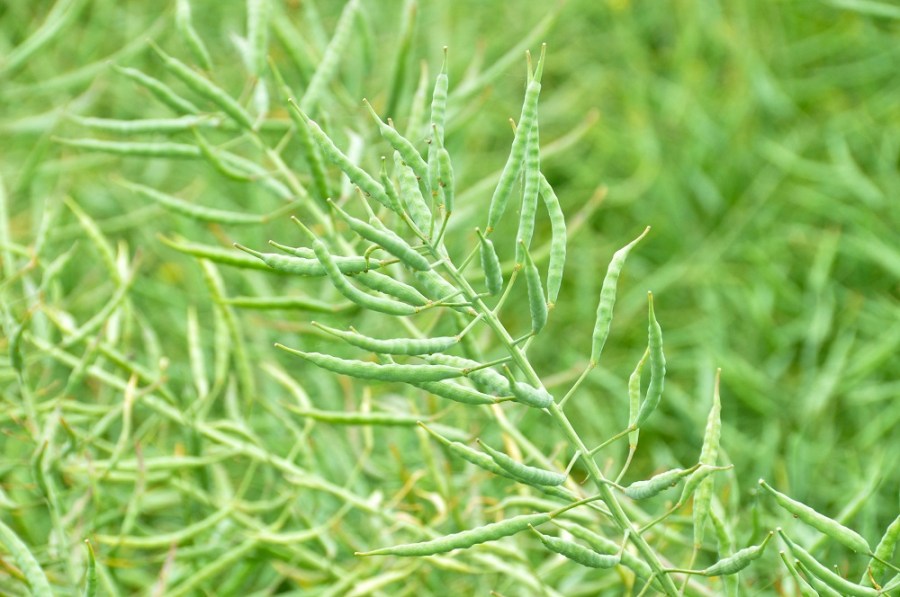Losing precious oilseed rape seeds before harvest would be an additional hit to the pocket in what has already been a difficult growing season. Fortunately, it’s a potential problem that can be mitigated. CPM reports
Harvest losses can be significant and mean the difference between profit and loss.
By Rob Jones
Oilseed rape has had a tough time this season. In some regions crop performance may well take a drubbing, but at this time of year getting as many of the tiny black seeds as possible to harvest is the prime consideration.

Mike Thornton highlights that uneven crops can pose a problem when it comes to deciding when to desiccate them.
In spite of the pressure on OSR growers to cut costs, the emphasis has to be about protecting yields and margins, believes Sussex-based ProCam agronomist Mike Thornton.
“From the very moment of drilling, the crop is nurtured and protected against a host of potential damaging and yield-robbing scenarios, right up until the combine enters the field. Coupled with weather and late-season disease, harvest losses can be significant and mean the difference between profit and loss, especially if yields are marginal,” he comments.
Mike advises growers across the south coast of England, with many OSR crops on light soils. He believes that to lose yield in the final stages of the crop’s life, through poor desiccation, harvesting or bad weather, are risks that can be mitigated. This is the reason he’s using a pod sealant to help prevent seed shedding and it’s a strategy that’s been very successful, he claims.
Pod shatter triggered by extreme weather events in the run up to harvest can typically result in yield reductions of between 8-12%, but losses can be much higher as a result of hailstorms and heavy rain. The problem arises from the swelling of ripe pods in wet weather, which then contract in dry weather. In the run up to a late harvest, brittle over-mature crops are particularly at risk of pod shatter as plants become older and drier with age.
Uneven crops that ripen at different stages, can add to the problems and the dilemma that many agronomists will face this season is when to desiccate OSR crops, many of which are all over the place after flea beetle larvae damage this spring.
“Whether the crop has suffered through flea beetle damage or winter pigeon grazing, unevenness at desiccation can have a big influence on how the crop performs overall,” he explains.
“Quite often, for whatever reason, 50% of the crop might be ready to desiccate, with 25% too far gone and another 25% not ready at all. That’s the dilemma we often face and historically, it’s a case of going with the majority of the field when timing desiccation.”
Pod-Stik (a latex-based co-polymer) from De Sangosse, can be applied up to eight weeks prior to any glyphosate application. It works by tacking and protecting the pod seam, reducing its natural tendency to split while allowing the pod to expand, contract and mature normally.
This affords 12 weeks protection after application safeguarding the crop through to harvest. Pod-Stik should be applied once pods have reached full size (growth stage 80-82) when they are green and still pliable, but no later than growth stage 89 when pods are ripe. At the later desiccant growth stages, yields within the tramline can be reduced as much as 30% through wheeling damage when travelling through the crop.
Mike has been impressed by the way the product has reduced yield loss across a whole range of OSR crops and conditions, although getting growers to go through the crop twice at that stage can be a challenge.
“This is where our job as agronomists is critical,” he explains. “To get the maximum benefit from Pod-Stik, it’s crucial to apply it early enough. Yes, there’s an increased application cost, but if the pods are sealed and protected in advance of desiccation, then tramline losses can be significantly reduced, even at 36m.
“Once growers have seen the benefits of doing this then they don’t need asking a second time. The proof of the pudding is definitely in the stubble after harvest (less volunteers). Up to 300-500kg/ha seed can be saved using a well- timed pod sealant, depending on the variety.”
He says Pod-Stik is best applied at a rate of 1.0 l/ha in 100-250 litres of water as a medium quality spray. “And if mixing with a partner, then the partner’s water volume recommendation should take priority. It can also be co-applied with a variety of desiccants. If co-applying, always follow the desiccant label and Pod-Stik should be added to the spray tank as the last component in the mixture,” he advises.




